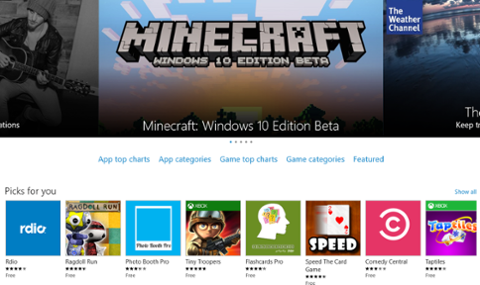 Developers, take note: smartphone apps now account for roughly half the time that Americans spend online, according to new data from research firm comScore. “While the smartphone app has been the most important access vehicle to the Internet in some time,” comScore added in a report, “growing its share to a point where it now eclipses all other digital media platforms combined speaks to just how central to our lives the smartphone has become.” Desktops came in second in comScore’s breakdown, with 32 percent of users’ online time; tablets stood in distant third, with 11 percent. Despite the massive popularity of smartphone apps, individual developers often complain that it’s difficult for their software to gain the attention it needs and deserves. Earlier this year, analytics firm App Annie concluded that the average app has a little over four months before it reaches “maturity” and stops generating large numbers of downloads. For certain categories, including productivity, the battle for relevance is particularly vicious. “The market for paid productivity apps for iOS is simply too difficult,” John Gruber wrote on his Daring Fireball blog in August, as part of a longer piece explaining why he was shutting down his Vesper app. “There is downward pressure on pricing for Mac apps, but the market is still there for quality apps that cost $20-100 (or more).” (His whole post is well worth reading; in short, he believes that his team should have started with building a Mac version of Vesper, before porting it to iOS.) The recent trend toward free-to-download apps, with revenue coming from in-app purchases, generates still more pressure on app developers, who must now come up with a constant stream of updates and features in order to justify a stream of micro-payments. Recognizing those challenges, both Google and Apple are exploring new plans for developers—including revenue-sharing subscription models—that may help apps generate more money in the long run. For mobile-app developers, it’s the best and worst of times. Smartphone apps are more popular than ever, and the potential revenues from a blockbuster app are huge, but gaining visibility in a crowded market has never been more difficult.
Developers, take note: smartphone apps now account for roughly half the time that Americans spend online, according to new data from research firm comScore. “While the smartphone app has been the most important access vehicle to the Internet in some time,” comScore added in a report, “growing its share to a point where it now eclipses all other digital media platforms combined speaks to just how central to our lives the smartphone has become.” Desktops came in second in comScore’s breakdown, with 32 percent of users’ online time; tablets stood in distant third, with 11 percent. Despite the massive popularity of smartphone apps, individual developers often complain that it’s difficult for their software to gain the attention it needs and deserves. Earlier this year, analytics firm App Annie concluded that the average app has a little over four months before it reaches “maturity” and stops generating large numbers of downloads. For certain categories, including productivity, the battle for relevance is particularly vicious. “The market for paid productivity apps for iOS is simply too difficult,” John Gruber wrote on his Daring Fireball blog in August, as part of a longer piece explaining why he was shutting down his Vesper app. “There is downward pressure on pricing for Mac apps, but the market is still there for quality apps that cost $20-100 (or more).” (His whole post is well worth reading; in short, he believes that his team should have started with building a Mac version of Vesper, before porting it to iOS.) The recent trend toward free-to-download apps, with revenue coming from in-app purchases, generates still more pressure on app developers, who must now come up with a constant stream of updates and features in order to justify a stream of micro-payments. Recognizing those challenges, both Google and Apple are exploring new plans for developers—including revenue-sharing subscription models—that may help apps generate more money in the long run. For mobile-app developers, it’s the best and worst of times. Smartphone apps are more popular than ever, and the potential revenues from a blockbuster app are huge, but gaining visibility in a crowded market has never been more difficult. Visibility: Smartphone Devs' Biggest Challenge
 Developers, take note: smartphone apps now account for roughly half the time that Americans spend online, according to new data from research firm comScore. “While the smartphone app has been the most important access vehicle to the Internet in some time,” comScore added in a report, “growing its share to a point where it now eclipses all other digital media platforms combined speaks to just how central to our lives the smartphone has become.” Desktops came in second in comScore’s breakdown, with 32 percent of users’ online time; tablets stood in distant third, with 11 percent. Despite the massive popularity of smartphone apps, individual developers often complain that it’s difficult for their software to gain the attention it needs and deserves. Earlier this year, analytics firm App Annie concluded that the average app has a little over four months before it reaches “maturity” and stops generating large numbers of downloads. For certain categories, including productivity, the battle for relevance is particularly vicious. “The market for paid productivity apps for iOS is simply too difficult,” John Gruber wrote on his Daring Fireball blog in August, as part of a longer piece explaining why he was shutting down his Vesper app. “There is downward pressure on pricing for Mac apps, but the market is still there for quality apps that cost $20-100 (or more).” (His whole post is well worth reading; in short, he believes that his team should have started with building a Mac version of Vesper, before porting it to iOS.) The recent trend toward free-to-download apps, with revenue coming from in-app purchases, generates still more pressure on app developers, who must now come up with a constant stream of updates and features in order to justify a stream of micro-payments. Recognizing those challenges, both Google and Apple are exploring new plans for developers—including revenue-sharing subscription models—that may help apps generate more money in the long run. For mobile-app developers, it’s the best and worst of times. Smartphone apps are more popular than ever, and the potential revenues from a blockbuster app are huge, but gaining visibility in a crowded market has never been more difficult.
Developers, take note: smartphone apps now account for roughly half the time that Americans spend online, according to new data from research firm comScore. “While the smartphone app has been the most important access vehicle to the Internet in some time,” comScore added in a report, “growing its share to a point where it now eclipses all other digital media platforms combined speaks to just how central to our lives the smartphone has become.” Desktops came in second in comScore’s breakdown, with 32 percent of users’ online time; tablets stood in distant third, with 11 percent. Despite the massive popularity of smartphone apps, individual developers often complain that it’s difficult for their software to gain the attention it needs and deserves. Earlier this year, analytics firm App Annie concluded that the average app has a little over four months before it reaches “maturity” and stops generating large numbers of downloads. For certain categories, including productivity, the battle for relevance is particularly vicious. “The market for paid productivity apps for iOS is simply too difficult,” John Gruber wrote on his Daring Fireball blog in August, as part of a longer piece explaining why he was shutting down his Vesper app. “There is downward pressure on pricing for Mac apps, but the market is still there for quality apps that cost $20-100 (or more).” (His whole post is well worth reading; in short, he believes that his team should have started with building a Mac version of Vesper, before porting it to iOS.) The recent trend toward free-to-download apps, with revenue coming from in-app purchases, generates still more pressure on app developers, who must now come up with a constant stream of updates and features in order to justify a stream of micro-payments. Recognizing those challenges, both Google and Apple are exploring new plans for developers—including revenue-sharing subscription models—that may help apps generate more money in the long run. For mobile-app developers, it’s the best and worst of times. Smartphone apps are more popular than ever, and the potential revenues from a blockbuster app are huge, but gaining visibility in a crowded market has never been more difficult. 
